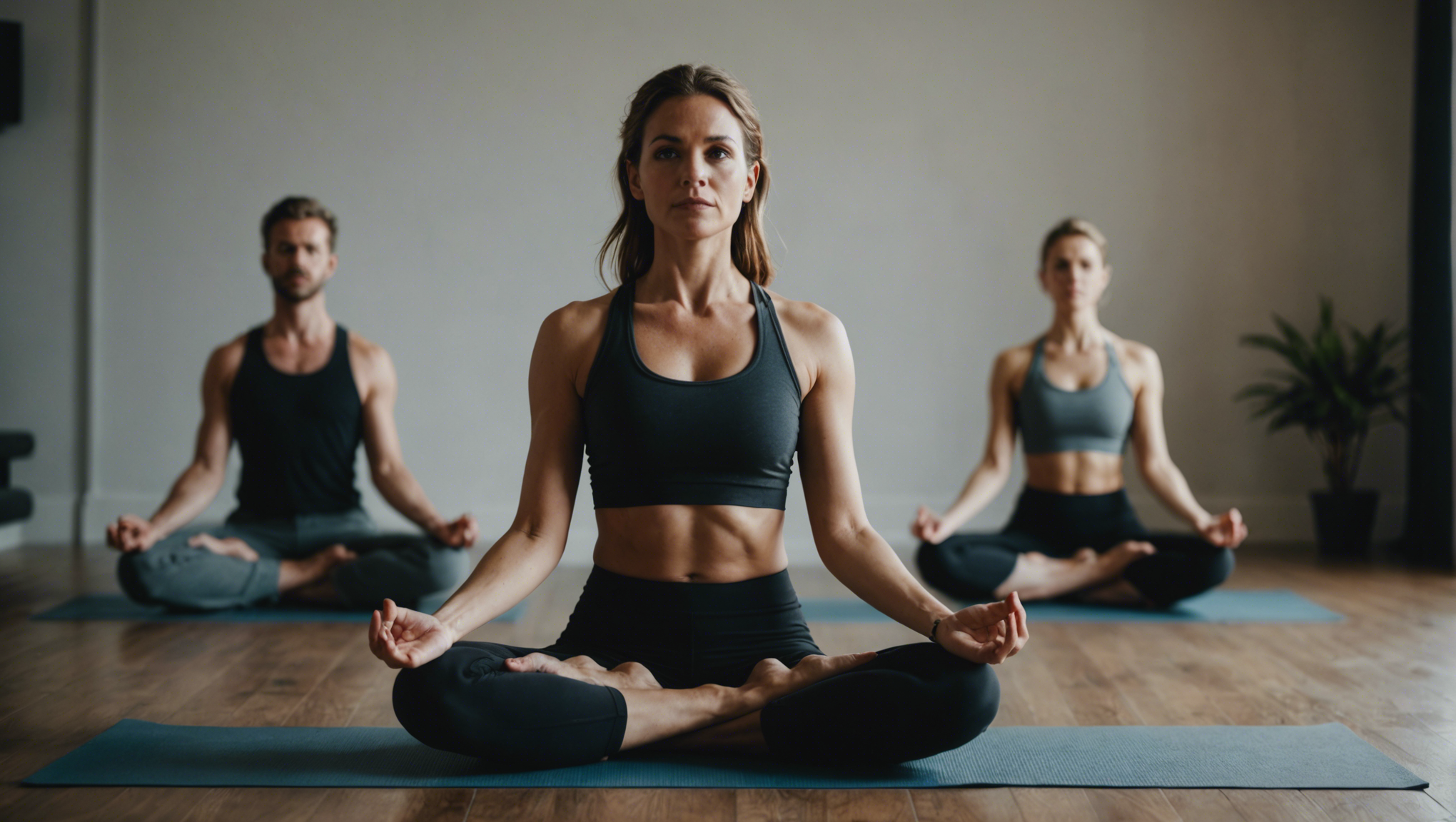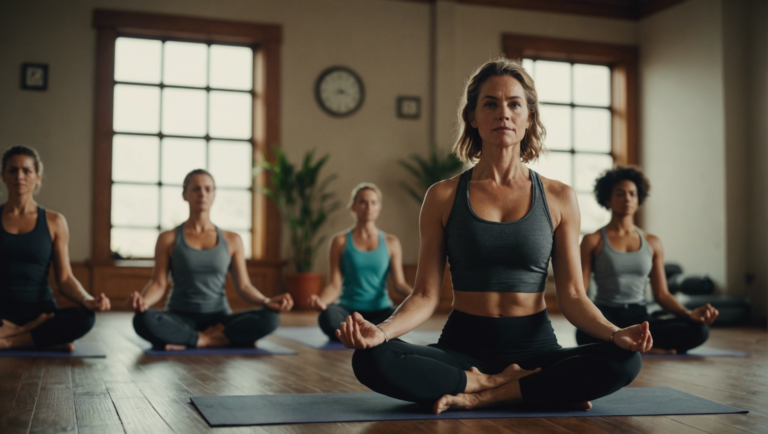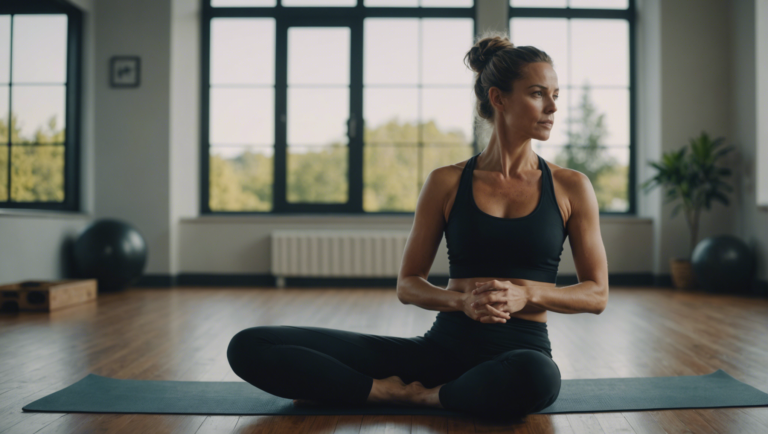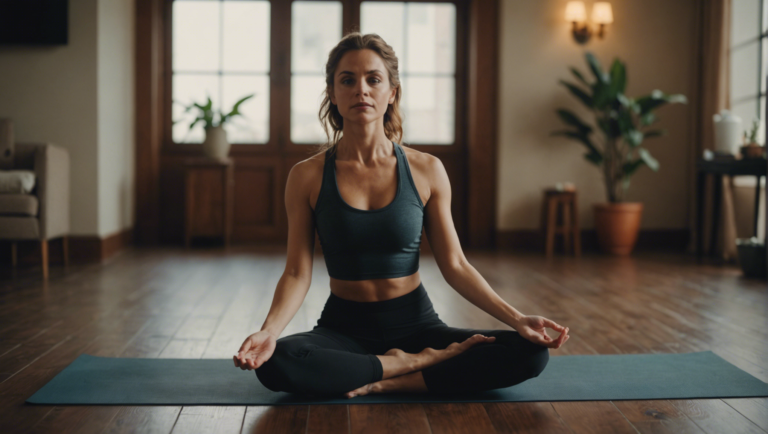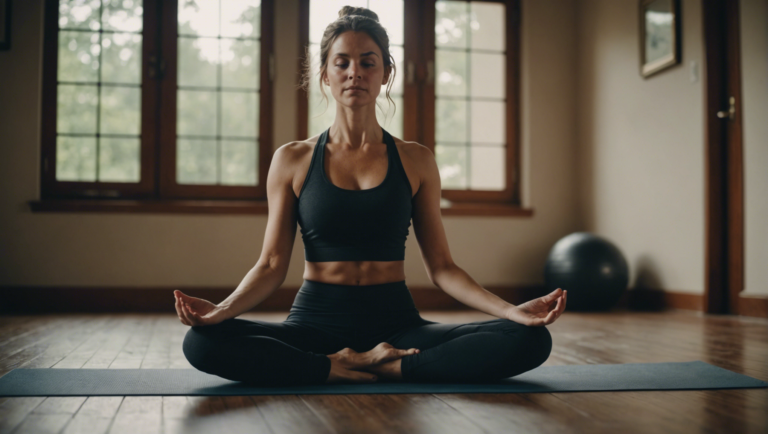Optimal Frequency: How Much Yoga Should You Do?
Unveiling the Optimal Yoga Frequency for Diverse Lifestyles
Yoga, an ancient practice with roots stretching back thousands of years, has surged in popularity across the globe. Its benefits are well-documented, ranging from enhanced flexibility and strength to improved mental health and stress reduction. Yet, one question that consistently emerges among both novices and seasoned practitioners alike revolves around the ideal frequency of this discipline. How often should one engage in yoga to reap its maximum benefits without overdoing it? The answer is nuanced, varying according to individual lifestyle, goals, and physical condition.
Tailoring Yoga to Your Lifestyle
Each person’s daily routine, physical abilities, and wellness goals are unique, making a one-size-fits-all approach to yoga frequency impractical. For someone with a sedentary job, incorporating movement into every day might be crucial, suggesting a lighter, more frequent practice. Conversely, individuals with physically demanding jobs might benefit from less frequent sessions focused on relaxation and stretching.
Beginner Guidelines
For those new to yoga, starting slowly is key to building a sustainable practice. Aiming for two to three sessions per week can allow the body to acclimate to new movements without causing overwhelm. This frequency also offers enough repetition to see progress in flexibility and strength over time.
Advancing Your Practice
As practitioners become more comfortable with the basics, they may wish to increase their frequency to deepen their practice. Four to five sessions per week can provide a good balance, allowing for varied practices that target different areas of the body and aspects of wellness. This might include a mix of vigorous vinyasa flows for strength and stamina, alongside restorative practices for relaxation and recovery.
Listening to Your Body
The most critical aspect in determining the optimal yoga frequency is tuning into one’s body. Some days, a gentle, meditative yoga session might be what the body needs for recovery, while on other days, an energetic ashtanga practice could feel rejuvenating. It’s essential to adjust your practice according to your body’s needs and avoid overexertion, which could lead to injury.
The Role of Yoga in Physical Recovery
For individuals using yoga as a tool for recovery from injury or to manage chronic conditions, working closely with a healthcare provider or a certified yoga therapist can help tailor a practice that supports healing. In these cases, the frequency and type of yoga will be carefully adjusted to avoid exacerbating existing issues while promoting mobility and strength.
Integrating Yoga with Other Activities
Those who engage in other forms of physical exercise, such as running or weightlifting, can benefit significantly from adding yoga to their routine. In this context, yoga can serve as a complementary practice that enhances flexibility, aids in muscle recovery, and reduces the risk of injury, potentially requiring less frequent, targeted sessions.
Balancing Yoga with Daily Commitments
Finding the right balance between yoga and life’s other commitments is crucial. Yoga should not feel like a chore or an additional stressor. Instead, it should fit seamlessly into your routine, offering a refuge from the daily grind. For some, this may mean shorter daily practices, while for others, longer sessions a few times a week may be more feasible and rewarding.
In essence, the optimal frequency of yoga is highly personalized, requiring each individual to assess their lifestyle, goals, physical condition, and, importantly, to listen to their body’s signals. While the journey towards determining the right balance may involve trial and error, the benefits of a tailored yoga practice are immeasurable, contributing to a healthier, more balanced life. Engaging in regular self-reflection about your yoga journey can ensure that your practice remains aligned with your evolving needs and priorities, truly embodying the spirit of yoga as a lifelong path to wellbeing.
The Impact of Yoga on Physical and Mental Health
The Transformative Benefits of Yoga on the Body
Yoga, an ancient practice that has transcended through centuries, elegantly combines physical postures, breathing exercises, and meditation. Its holistic approach targets both the mind and body, offering a plethora of benefits that cater to our overall well-being. The physical benefits of yoga are both profound and widely acknowledged. Regular engagement in this practice can lead to enhanced flexibility, a significant factor in preventing injuries and maintaining a youthful physique. Moreover, yoga aids in strengthening muscles, contributing to a more toned and balanced body structure. It doesn’t stop there; yoga also plays a crucial role in improving posture, a necessary adjustment in today’s digital age where many find themselves hunched over screens for prolonged periods.
Yoga: A Keystone for Mental Equilibrium and Stress Reduction
Yoga’s impact extends beyond the physical, venturing deeply into the realms of mental health. In a world where stress and anxiety are commonplace, yoga emerges as a beacon of tranquility. Through focused breathing exercises (pranayama) and meditation, practitioners learn to center their minds, cultivating a state of relaxation that combats the daily stressors of life. This practice has been scientifically proven to lower cortisol levels, the body’s stress hormone, which in turn can alleviate symptoms of depression and anxiety. The regular practice of yoga encourages a mindful lifestyle, fostering an environment where one learns to live in the present. This mindfulness can lead to a reduction in overthinking and unnecessary stress, enhancing overall life satisfaction.
The Role of Yoga in Enhancing Concentration and Cognitive Function
Engaging in yoga does not only soothe the mind but also sharpens it. The discipline it instills, especially through meditation, can lead to improved concentration and a heightened state of awareness. This mental clarity is invaluable, not just for academic or occupational performance but in daily decision-making processes. Furthermore, studies have linked regular yoga practice with enhanced cognitive function, suggesting it may delay the cognitive decline associated with aging. By boosting brain health, yoga supports a robust mental framework, enabling individuals to tackle life’s challenges with a calm and focused demeanor.
Yoga for Heart Health and Improved Respiration
The benefits of yoga also extend to cardiovascular health. By reducing stress levels and promoting a healthier lifestyle, yoga can lead to lower blood pressure and a decreased risk of heart disease. The breathing techniques integral to yoga practice enhance lung capacity and respiratory function, beneficial not only for those with respiratory conditions but for everyone aiming for optimal health. This improvement in heart and respiratory health underscores yoga’s comprehensive approach to wellness, highlighting its role not just as a form of exercise but as a life-enhancing practice.
The Impact of Yoga on Sleep Quality and Energy Levels
Another remarkable benefit of yoga is its ability to improve sleep quality. The relaxation and mindfulness achieved through yoga can help alleviate sleep disorders, enabling practitioners to enjoy deeper, more restorative sleep. This improvement in sleep naturally leads to enhanced energy levels and reduced fatigue, allowing individuals to approach their daily activities with renewed vigor and a clearer mind.
Crafting a Personal Yoga Routine for Optimal Health
The versatility of yoga makes it accessible to everyone, regardless of age or fitness level. By embracing yoga and integrating it into one’s lifestyle, individuals can embark on a journey toward improved physical and mental health. The beauty of yoga lies in its adaptability; it can be tailored to meet individual needs and schedules, ensuring that everyone can harness its transformative power.
Exploring the myriad styles and finding what resonates personally can be the beginning of a deeply rewarding journey. As research continues to unveil the multifaceted benefits of yoga, it stands as a testament to its enduring relevance and potency in fostering well-being and vitality.
Customizing Your Yoga Journey: Factors to Consider
Yoga is a deeply personal journey—one that resonates differently with each individual who steps onto the mat. Customizing your yoga practice is essential for fostering growth, ensuring safety, and maintaining enthusiasm. Several key factors come to play in tailoring yoga to fit your unique needs and lifestyle. Understanding these can elevate your practice, making it truly your own.
Assessing Your Physical Condition
Identifying Physical Capabilities and Limitations
Your physical condition significantly influences your yoga practice. Recognizing your body’s capabilities and limitations is crucial in choosing poses that benefit rather than harm. If you have any pre-existing injuries or health conditions, consider consulting a healthcare provider before embarking on your yoga journey. This precaution ensures your practice is safe and aligned with your body’s needs.
Setting Personal Goals
Developing a Goal-Oriented Practice
Why have you turned to yoga? Is it for physical fitness, emotional release, spiritual growth, or a combination of these reasons? Your goals play a pivotal role in customizing your practice. For instance, if flexibility is your aim, incorporating poses that target the spine, hips, and hamstrings would be beneficial. Alternatively, if stress reduction is your goal, prioritizing breathing techniques and meditation could be more advantageous.
Choosing the Right Style
Finding a Yoga Style that Aligns with Your Needs
The diversity in yoga styles means there’s something for everyone, from the dynamic sequences of Vinyasa to the restorative calm of Yin. Exploring different styles can help you find the one that resonates most with your personal goals and physical condition. Remember, what works for one person may not work for another, and your preferred style might change as you evolve in your practice.
Consistency and Variety
Balancing Routine and Exploration
While consistency in practice is key to progress, integrating variety keeps your journey engaging and challenging. Consistently practicing the same style or poses can lead to plateauing or, worse, injury due to repetitive strain. By introducing new poses, styles, or even teachers, you keep your practice fresh and your body challenged in healthy ways.
Listening to Your Body
The Importance of Intuition in Your Practice
One of the greatest lessons yoga teaches is to listen to your body. This awareness helps you understand when to push and when to pull back, preventing injuries and fostering a deeper connection with your physical and emotional states. Honing this intuition can guide you in customizing your practice to your body’s daily varying needs.
Finding the Right Environment
Creating a Space that Inspires Practice
Your environment can significantly affect your ability to focus and relax into your practice. Whether you’re attending a class or practicing at home, ensure your space is inviting, quiet, and free from distractions. The right environment supports a deeper immersion into the mental and spiritual aspects of yoga.
Engaging with a Community
The Benefits of Sharing Your Practice
While yoga is an individual journey, the community aspect can be incredibly enriching. Engaging with others who share your passion provides motivation, inspiration, and sometimes necessary guidance. Whether through in-person classes, workshops, or online forums, being part of a yoga community can add a rewarding social element to your practice.
Customizing your yoga journey is a dynamic process of exploration and adaptation. By considering these factors, you craft not just a practice, but a pathway to personal growth and well-being. Remember, there is no one-size-fits-all in yoga. The beauty of this ancient practice lies in its flexibility to cater to the unique individual that is you. Your yoga journey is yours to shape—embrace the freedom and responsibility that come with it.
Overdoing Yoga: Recognizing the Signs and Avoiding Burnout
Yoga, with its ancient roots and modern popularity, embodies a blend of spiritual, physical, and mental practices aimed at harmonizing the body with the mind. While its benefits are vast, ranging from improved flexibility and strength to stress reduction, there’s a growing concern among practitioners about the possibility of overdoing it and facing burnout or injury. Recognizing the signs of overdoing yoga and understanding how to avoid burnout are essential considerations for anyone looking to maintain a healthy and sustainable practice.
Recognizing the Physical Signs of Overexertion
The first step in avoiding yoga burnout is to listen to your body and recognize the physical signs that you may be pushing too hard. Persistent soreness, fatigue, and a decrease in performance can all signal that your body needs rest. In yoga, where mindfulness and body awareness are central tenets, ignoring these signs can lead to injuries that may sideline your practice for an extended period.
Tuning into Mental and Emotional Cues
Beyond physical indicators, mental and emotional cues can also suggest that it’s time to pull back. Yoga is supposed to be a practice that helps reduce stress and promote mental clarity. If you find that your yoga practice is becoming another source of stress, or if you’re feeling mentally exhausted and dreading your practice, it may be time to reassess your routine.
Establishing a Balanced Practice Routine
Creating a balanced yoga routine is crucial to avoid burnout. This means varying your practice to include a mix of vigorous asanas, restorative poses, and meditation. It might also mean incorporating days of rest or other forms of exercise to give your body a break. Listening to your body and understanding the messages it sends is key to maintaining a practice that is both fulfilling and sustainable.
Setting Realistic Goals and Expectations
One common reason practitioners face burnout is the pressure to advance quickly or achieve certain poses. Setting realistic goals and having patience with your progress can help keep your practice enjoyable and rewarding. Remembering that yoga is a personal journey without a defined endpoint can help mitigate feelings of frustration or impatience that may lead to overexertion.
Seeking Guidance from Experienced Instructors
Experienced yoga instructors can provide valuable insights into how to practice safely and avoid burnout. They can offer modifications to poses, suggest sequences that match your current level of fitness or flexibility, and advise on how often to practice. An experienced instructor’s guidance is indispensable in ensuring that your practice remains balanced and healthy.
Embracing Rest and Recovery
Rest and recovery are as critical to your yoga journey as the practice itself. Integrating days of rest into your routine allows your body to heal and your mind to assimilate the benefits of your practice. Practices like Yoga Nidra, or yogic sleep, can offer deep levels of relaxation without placing any physical demand on the body, providing an excellent way to incorporate rest into your yoga routine.
The Role of Mindfulness in Preventing Burnout
Mindfulness, a core element of yoga, involves being present and fully engaging with the current moment. By practicing mindfulness, both on and off the mat, you can become more attuned to your body’s needs and more aware of when it’s time to rest or modify your practice. This heightened sense of awareness is a powerful tool in avoiding burnout.
Maintaining a sustainable yoga practice requires a careful balance of pushing your limits and recognizing when to pull back. By listening to your body, setting realistic expectations, and incorporating rest and variety into your routine, you can enjoy the vast benefits of yoga without the risk of burnout. The journey of yoga is one of self-discovery and personal growth, where the ultimate goal is not just physical strength or flexibility but a deep, lasting sense of well-being.
The Role of Rest Days in Enhancing Yoga Benefits
Understanding the Importance of Rest Days for Yoga Practitioners
Yoga, an ancient practice that combines physical postures, breathing exercises, and meditation, is renowned for its multiple health benefits, ranging from increased flexibility and strength to reduced stress and improved mental health. However, as with any physical regimen, incorporating rest days is crucial to maximizing these benefits and promoting a sustainable practice. This article delves into why rest is pivotal for yoga enthusiasts and how it can enrich the overall yoga experience.
Balancing Effort with Recovery
Regular yoga practice embodies the principle of balancing effort with ease. While consistent practice is vital for progress, the body needs time to recover and adapt to the stress it undergoes during yoga sessions. Neglecting rest can lead to overexertion, fatigue, and even injury, thereby hindering one’s yoga journey. Proper recovery through rest days facilitates muscle repair, strengthens the body, and prepares it for further challenges, ensuring a balanced and effective yoga practice.
Enhancing Flexibility and Strength
One might assume that taking days off from yoga could stall improvement in flexibility and strength. On the contrary, rest periods allow the body to adapt to the physical demands of yoga, enhancing muscle recovery and growth. During yoga sessions, muscles experience small tears due to stretching and strength-building postures. Rest days are when the body repairs these tears, leading to stronger and more flexible muscles. Therefore, skipping rest can actually slow down progress in achieving greater flexibility and strength.
Promoting Mental Clarity and Focus
Yoga is not only about physical prowess but also mental well-being. Adequate rest is as beneficial for the mind as it is for the body. During rest days, the nervous system has a chance to recuperate, reducing cortisol levels and aiding in stress management. This mental break can clear the mind, improve focus, and enhance motivation, making yoga practice more effective and fulfilling. Moreover, it provides an opportunity to reflect on one’s yoga journey, set new goals, and cultivate a deeper connection to the practice.
Preventing Yoga Burnout
Just like physical fatigue, psychological fatigue or burnout can also arise from a lack of rest. Practicing yoga without allowing for sufficient downtimes can transform what is supposed to be a rejuvenating activity into a monotonous routine. This can diminish enthusiasm and dedication to yoga, impacting overall engagement and progression. rest days helps maintain the excitement and passion for yoga, keeping the practice fresh and motivating.
Allowing Time for Integration
Yoga is an experiential practice that extends beyond physical dimensions, promoting personal growth and self-discovery. Rest days provide an invaluable opportunity for the integration of these experiences. During periods of rest, practitioners can contemplate and assimilate the insights and emotions that arise during practice. This deepens the transformative power of yoga, fostering a greater sense of inner peace and personal evolution.
Rest days are not a halt in one’s yoga journey but rather an essential component of a holistic yoga practice. They ensure physical safety and psychological well-being, enhancing the overall quality and enjoyment of the practice. By embracing rest, yoga practitioners optimize the benefits of their practice, embodying the true essence of yoga as a sustainable path to health and harmony. Remember, yoga is not just about the postures you do on the mat but also about how you honor your body and mind off the mat, through rest and recovery.
Conclusion
Navigating the path to pinpointing the optimal frequency of yoga practice intertwines with understanding its profound effects on both our physical form and mental well-being. The journey isn’t one-size-fits-all but rather a deeply personal exploration that respects our body’s signals and the unique demands of our lifestyles. By unraveling the intricate relationship between yoga and its benefits across the spectrum of daily life, we invite a dialogue within ourselves about what truly serves our holistic health.
Understanding the symbiosis between yoga and health unveils its dual role as a catalyst for physical vitality and a sanctuary for mental peace. The rhythmic flow of movements synchronizing with mindful breaths not only enhances muscular strength and flexibility but also carves out a niche for mental clarity and emotional stability in the hectic tapestry of modern existence. This intricate dance between body and mind underscores the necessity of a well-intentioned practice regime that harmonizes with individual physical needs and life’s inevitable fluctuations.
The quest for personalizing one’s yoga practice necessitates a thoughtful reflection on several pivotal factors. The diversity in physical capabilities, availability of time, and the specific goals one hopes to achieve through yoga are critical components that shape the architecture of an ideal yoga routine. Whether seeking relief from chronic stress, improving posture and balance, or embarking on a spiritual quest, tailoring the frequency and intensity of practice to align with these goals is essential for fostering progression without overstepping the body’s thresholds.
The enthusiasm to dive deep into yoga’s transformative journey can sometimes lead us astray, venturing into the realm of excess. Overdoing yoga, contrary to popular belief, can erode its benefits, replacing serenity with strain and nurturing with fatigue. Recognizing the signs of overexertion—be it physical discomfort, diminished joy in practice, or a sense of obligation rather than fulfillment—is a crucial step in recalibrating one’s approach. Yoga, in its essence, advocates for a gentle unfolding of capabilities and awareness, encouraging practitioners to listen to and honor the body’s innate wisdom.
Integral to sustaining a rewarding yoga practice is the acknowledgment of rest days as pivotal milestones in the journey. These intermissions are not voids of inactivity but rather fertile grounds for growth, allowing the body and mind to assimilate the benefits of practice, repair, and rejuvenate. The strategic incorporation of rest days amplifies yoga’s healing potential, reinforcing the resilience of the physical body and enriching the tranquility of the mental landscape.
As we traverse through the contours of defining an optimal yoga frequency, it becomes evident that it’s not merely about the quantity of practice but the quality and intentionality that underpin it. A balanced approach that elevates awareness, fosters incremental growth, and honors the need for rest emerges as the quintessence of a sustainable and enriching yoga practice. The pursuit is not to adhere rigidly to a prescribed frequency but to cultivate a responsive and adaptive practice that resonates with the evolving narratives of our lives.
Embarking on the yoga journey with mindfulness towards these principles paves the way for an experience that transcends the physical dimensions of practice, nurturing a profound connection with the inner self. It encourages a dialogue with our body and mind, fostering a practice that is not only consistent with our external circumstances but also reflective of our internal states. As we deepen our relationship with yoga, we learn to dance to the rhythms of life with grace and poise, embracing the ebb and flow of our practice as a mirror of our journey through life.
This exploration of yoga’s optimal frequency, its health implications, personalization, caution against overindulgence, and the significance of rest, invites practitioners to approach their yoga journey with a sense of curiosity, respect, and reverence. It is an invitation to craft a practice that is as unique as the individual, one that nourishes, challenges, and aligns with the profound beauty of being human.
